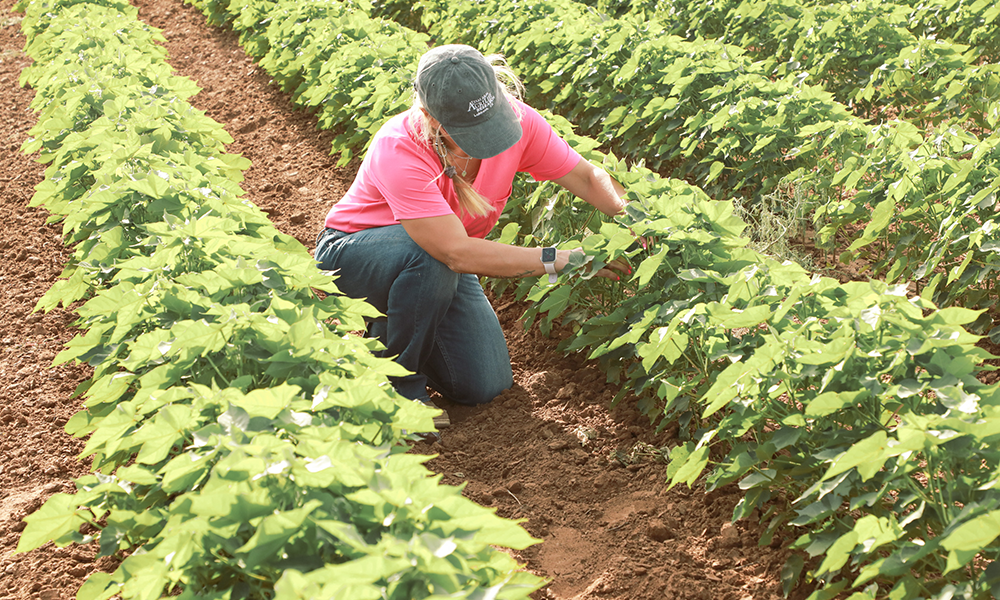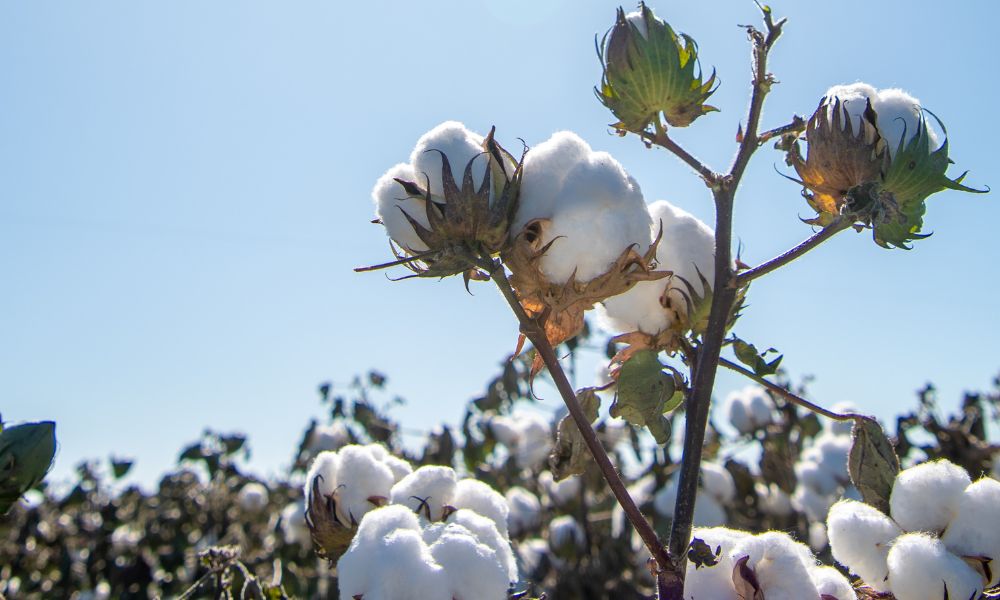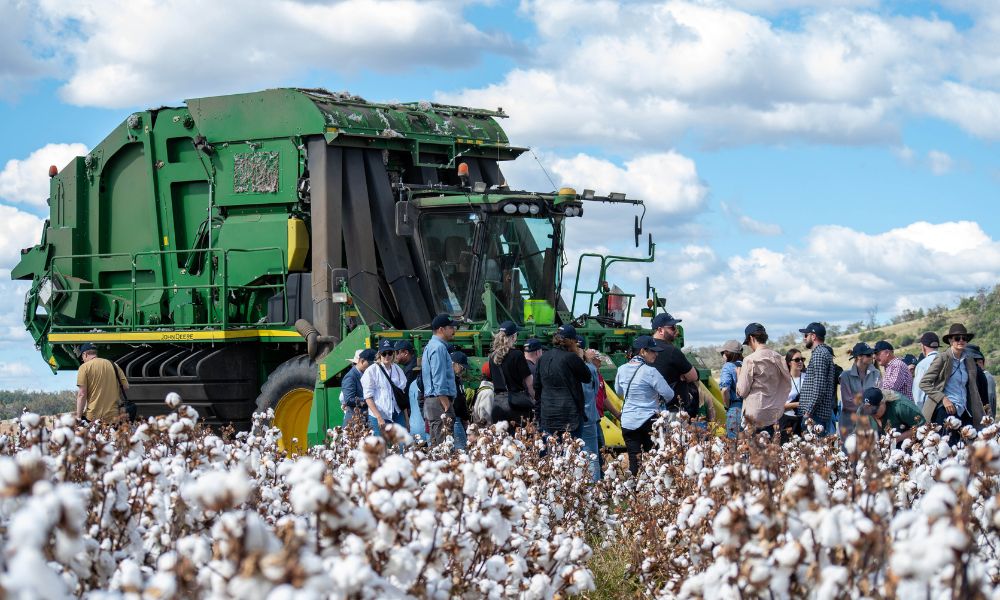CottonWorks™ Pathways to Progress Webinar Series Outlines Achievements Toward 10-Year Sustainability Goals
August 17, 2021
The U.S. cotton industry describes its initiatives and measures progress toward goals that decrease environmental impact
U.S. cotton producers, researchers, and industry organizations have been pushing sustainability efforts that maximize agricultural efficiency for more than three decades. In an effort to further reduce its environmental impact, the U.S. cotton industry came together in 2015 to set measurable, science-based sustainability goals for the next 10 years, including reducing soil loss, water use, energy use and greenhouse gas emissions.
In its recent webinar series, Pathways to Progress, CottonWorks™ explores the technologies and management systems that are helping the U.S. cotton industry achieve its sustainability goals and measures improvements on these goals to date.
Visit CottonWorks™ Sustainability Goals to watch all five webinars in the series.
Sustainability Goals for U.S. Cotton and Pathways to Progress
Cotton Incorporated’s Vice President of Agriculture and Environmental Research, Dr. Kater Hake, and Chief Sustainability Officer, Dr. Jesse Daystar, began the Pathways to Progress series with a webinar discussing sustainability goal development. The U.S. cotton industry followed the American Society of Agricultural and Biological Engineers’ framework for evaluating agricultural sustainability, creating key performance indicators (KPIs) for producing each pound of cot-ton as well as the pathways to achieve each goal. The 10-year sustainability goals include:
- Increase soil carbon by 30%
- Increase land use efficiency by 13%
- Decrease GHG emissions by 39%
- Decrease soil loss per acre by 50%
- Decrease water use by 18%
- Decrease energy use by 15%
A webinar on how to reduce climate impacts in agriculture included USDA research agronomist Dr. Arlene Adviento-Borbe exploring research on how conservation cropping systems can reduce greenhouse gas emissions. Another session enlisted David Lamm of the Soil Health Institute to outline the four soil health principles, and soil carbon and land-use efficiency’s outsized effect on sustainability. Cotton Incorporated’s Dr. Ed Barnes and Dr. Jesse Daystar addressed how the cotton industry is increasing water-use efficiency in separate webinar.
The Pathways to Progress’s most recent webinar—aired on July 27, 2021—details the tools U.S. cotton producers have used to make progress toward the 10-year sustainability goals.
Visit CottonWorks™ Sustainability Goals website to watch the webinars and find a mid-term progress report in early 2022.
The Industry-Wide Metrics and Protocols That Drive Cotton Sustainability
U.S. cotton leads the world in sustainable agricultural practices, in large part due to an industry-wide approach to measuring and improving outcomes. As Allison Thomson of Field to Market reflected in the latest Pathways to Progress webinar, establishing a single framework for metrics in the industry reduces the data burden on farmers, and provides more, higher quality data for all cotton producers. Field to Market’s Fieldprint® Platform creating these industry-wide metrics for U.S. cotton.
Field to Market—which unites more than 140 members across the cotton supply chain—uses data that growers input into the Fieldprint® Platform, along with scientific studies, EPA reports, and USDA statistics to calculate a national-level sustainability trend report every five years. The National Indicators Report examines data dating back to 1980, continuously improving methodology and data to earlier years as well as adding new data. The last National Indicators Report was published in 2016, and an updated report will be released later this year.
Visit the CottonWorks™ website in early 2022 for a mid-term assessment of the cotton industry’s progress toward its 10-year goals based on the National Indicators Report.
As well as measuring sustainability metrics, the Fieldprint® Platform demonstrates the areas where growers can improve most. Using this tool is a requirement for growers participating in the U.S. Cotton Trust Protocol, another key resource uniting the U.S. cotton industry’s sustainability efforts. The protocol currently tracks 1.5 million bales through the entire cotton value chain to help all cotton producers better understand their environmental impact.
Cotton Incorporated’s Dr. Jesse Daystar revealed in the webinar that the U.S. Cotton Trust Protocol aims to bring over half of all cotton growers into the program by 2025, allowing unprecedented transparency into the U.S. cotton industry. With established sustainability targets, an industry-wide measurement system, and end-to-end supply chain transparency growing every day, U.S. cotton has one of the most robust, science-based sustainability efforts in any industry.
The work we do is possible because of collaborations with researchers like these and partnerships with people all throughout the value chain. Ready to commit to sustainably produced cotton? Become a Cotton LEADS℠partner today. Interested in doing even more? Contact us for ideas to get the most out of sustainable cotton and your partnership with Cotton LEADS.














Recent Comments